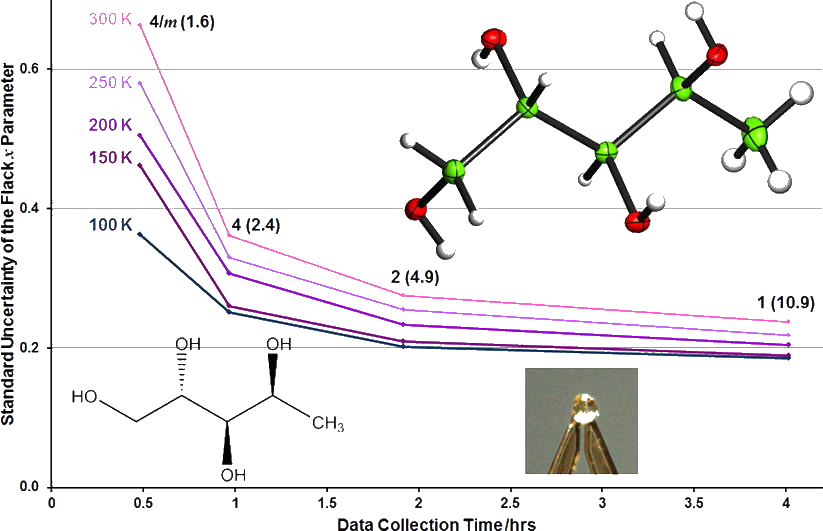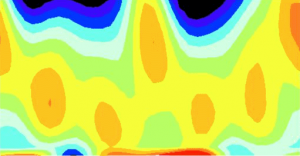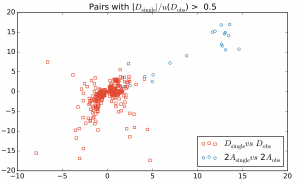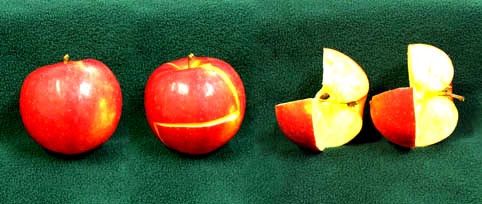Tetrahedron Asymmetry 2017, 28(10), 1330-1336 [doi:10.1016/j.tetasy.2017.08.016]
Students of single crystal X-​ray diffraction are often give advice as to how best to collect their data when attempting absolute configuration determination. These ‘rules’ often have more grounding in gut-​feeling than evidence. Thus, in an effort to provide advice and evidence that today’s crystallographers can pass onto to tomorrow’s young scientists, we present a systematic study of 1-​deoxy-​L-​arabinitol, a straight chain sugar which crystallizes well in the space group I41.
- Publisher’s copy: Science Direct
- Oxford University Research Archive (ORA)




